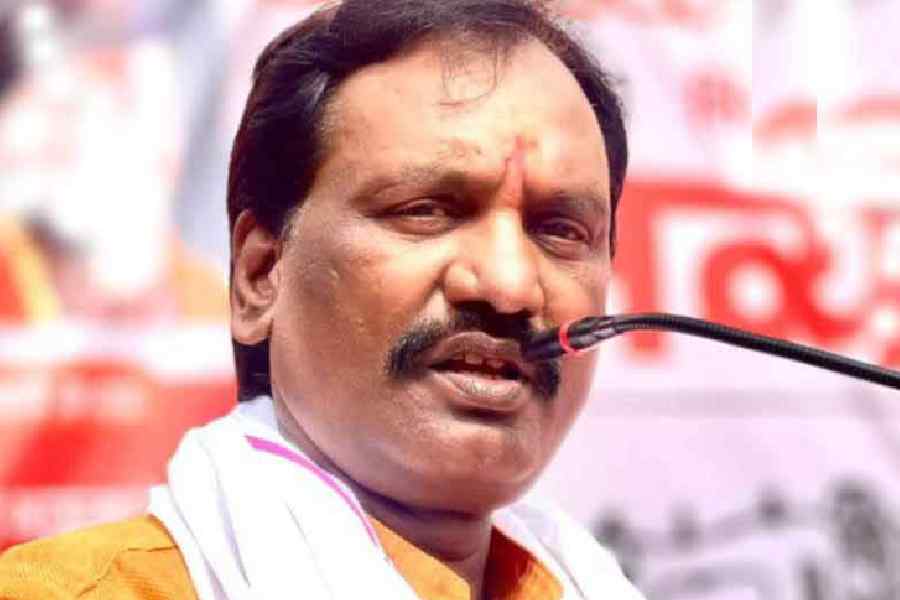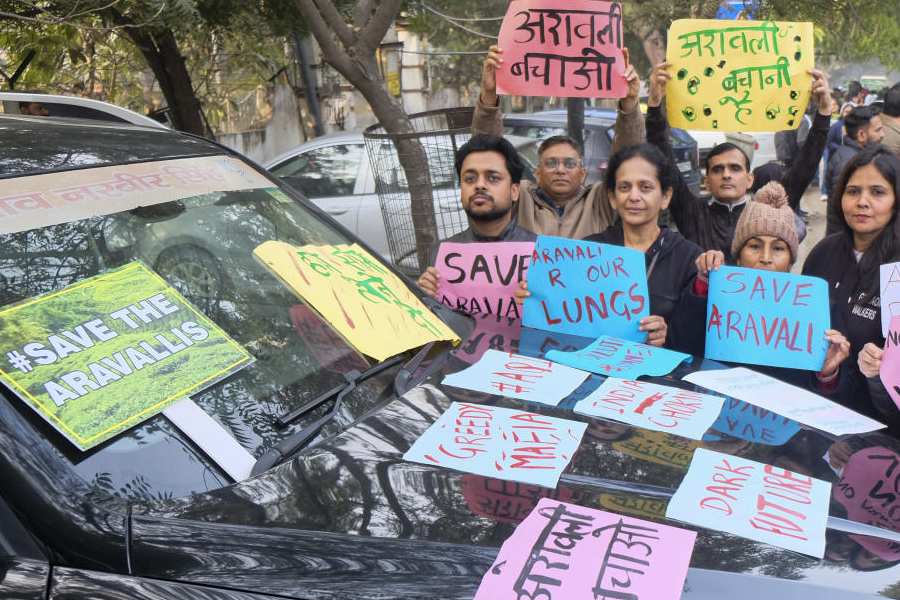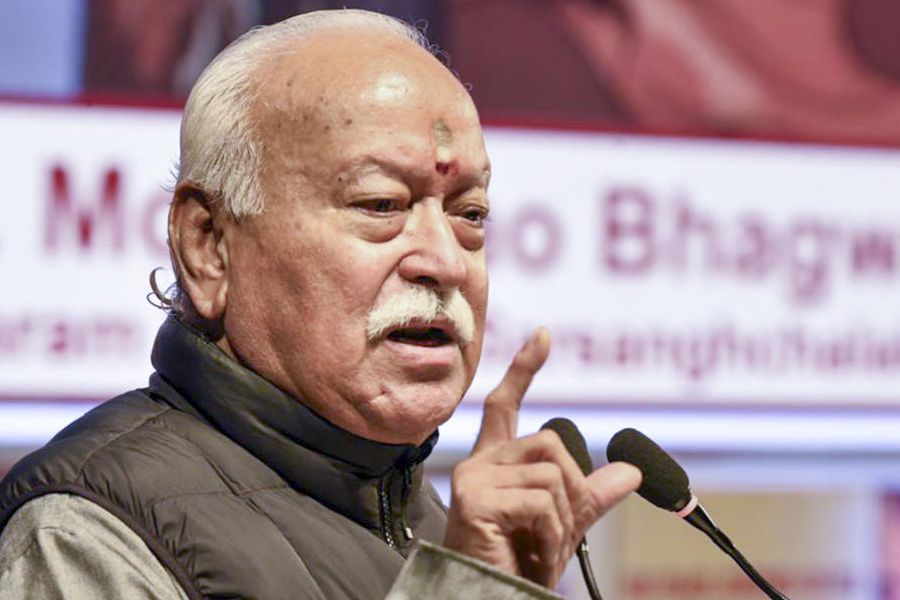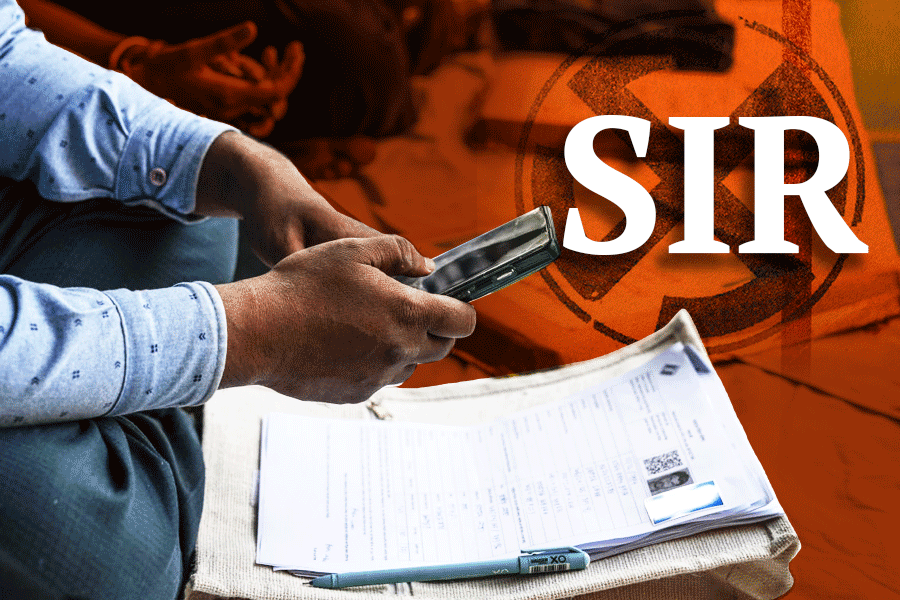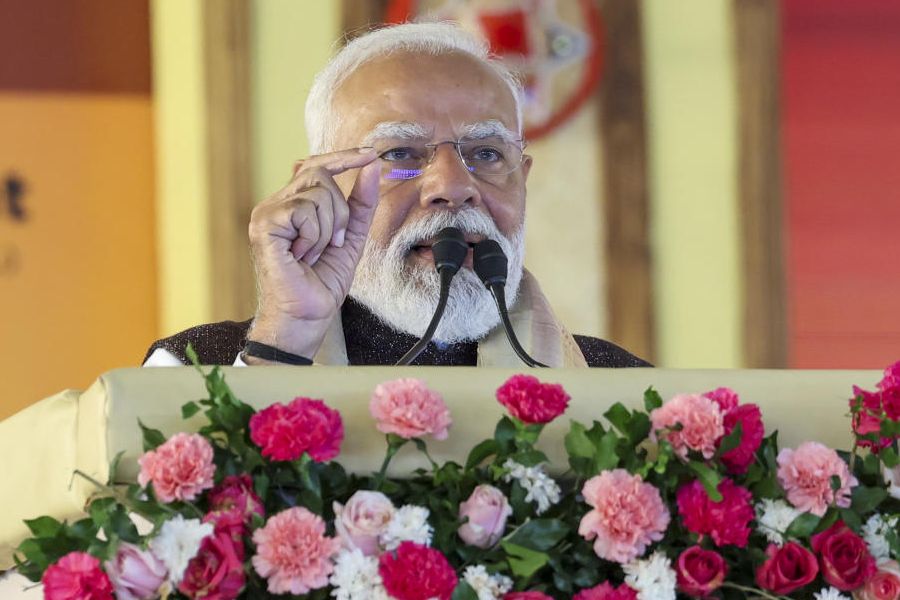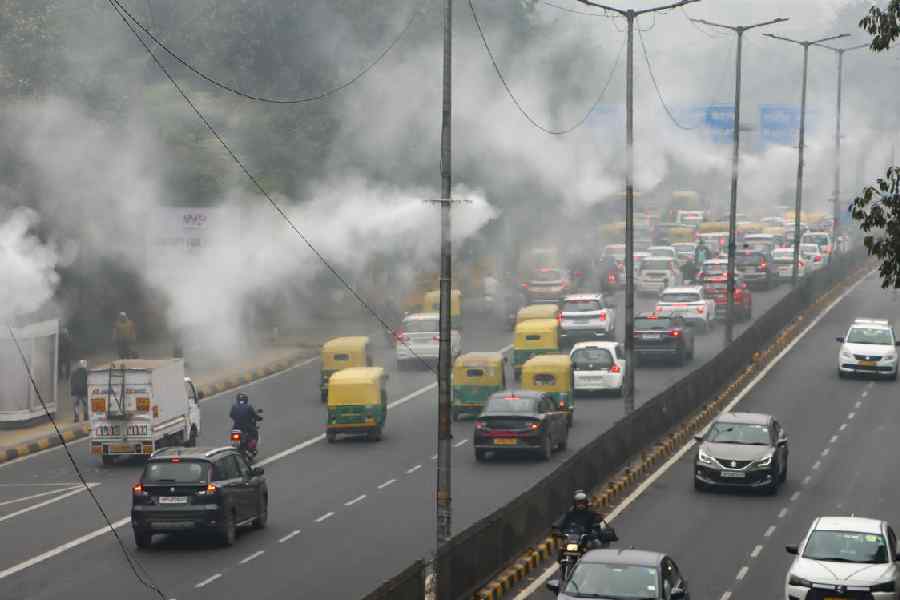 |
| Devendra Sharma (foreground) has added English dialogue to his Nautankis to appeal to the modern day audience. Photo courtesy Swagato Basumallick |
You know the Bhangra and even Baul music but have you ever heard of Dastangoi or Yakshagana puppetry? No, these aren’t new-fangled ‘fusion’ art forms. Dastangoi is the ancient art of storytelling that even held the Emperor Akbar spellbound. And Yakshagana puppetry has been around for nearly 350 years.
The bad news is that Dastangoi was once regarded as a ‘lost art’. As for Yakshagana puppetry, only one Yakshagana puppet troupe is left in Dakshina Kannada, Karnataka, now. But the good news is that both art forms are alive today. Also alive are Nautanki, a form of folk musical theatre, the Natua and Guba dances, and Bengal’s Jorano Pat or painted scrolls used for storytelling. All this is because of a few people who’re determined to revive these arts.
Some of them are bringing a contemporary relevance to the forms by using them to spread social awareness, while others are introducing folk artists to urban areas.
Back from the brink
 |
| One of Mahmood Farooqui’s (right) innovations in Dastangoi is introducing a second storyteller |
Take Dastangoi. The art of storytelling was part of an oral culture where listeners were regaled by a dastango (storyteller) with tales of love, war, sorcery and adventure that were woven into dastans or epics. The first dastan in Persian, centred on Amir Hamza, an uncle of the Prophet Mohammed, made its way to India in the 16th century. But by the time Delhi- based writer (and future dastango) Mahmood Farooqui began reading the Tilism-e Hoshruba chapter of the Dastan-e Amir Hamza in 2002, Dastangoi was a lost art. Now, he’s revived it.
Devendra Sharma, who was born in a small village in Rajasthan, remembers the neighbouring villagers flocking to watch his father, famous Nautanki artist Pandit Ram Dayal Sharma, perform. Nautanki or folk operatic theatre punctuated with song and dance, was a precursor of the modern-day Hindi film. But it took a beating with the advent of cinema and television.
Like Sharma, Bhaskar Kogga Kamath is developing the art that his family was engaged in. A sixth generation ‘suthradhara’ or puppeteer, Kamath was trained in Yakshagana puppetry by his father Sri Kogga Kamath.
 |
| Efforts are on to structure the costumes and choreography of the Natua dance form while keeping the essence intact |
Yakshagana Bayalata is a traditional dance drama popular in coastal Karnataka and Yakshagana puppets are the striking 18-in-tall wooden replicas of Yakshagana artists. The puppet shows, which are based on the epics, follow the norms of the Yakshagana Bayalata. Today, Kamath’s Uppinakudru Yakshagana puppet troupe is the only one that exists in the region.
Bengal’s Jorano Pat or painted scrolls also draw on Indian mythology. Here, the story’s illustrated as a sequence of frames painted on a long scroll and a song created to accompany it. Today, because of the market, the Jorano Pats are usually divorced from the minstrel’s song. Calcutta-based folk arts curator and social entrepreneur Nandita Palchoudhuri is one of the people engaged in looking for new ways to preserve the authenticity of the art.
In Bengal’s Purulia and Murshidabad districts, the number of troupes engaged in the Natua and Guba dances has shrunk drastically as there’s no money in it. Purulia’s Natua dance combines acrobatics with banjara or gypsy tricks like swallowing fire. “In the past, kings and zamindars used to keep Natua dancers to entertain and motivate their army,” explains Kaushik Dutta, whose organisation Song of Soul is resuscitating the form.
He’s also trying to “structure” Murshidabad’s Guba dance into a professional form. This is a group dance where the rhythm is generated by indigenous instruments like the dubki and gub gubi (brass clappers). It originates from Vaishnava music, the trails of which were left behind by the visit of Hindu seer Chaitanya Mahaprabhu during his padayatra in the district.
 |
| Nandita Palchoudhuri’s (below) main aim is to preserve the authenticity of Jorano Pat where the music and art stay combined Pix: Rashbehari Das |
 |
The revivalists are resurrecting these traditional arts by innovating with form and content. So while the traditional dastan was told by a single dastango, Farooqui — who usually performs with Danish Husain — has introduced two performers and the jugalbandi (duet) format. To help the non-Urdu speaking audience , a synopsis is given before the performance.
Sharma, who’s an assistant professor of communications at California State University, Fresno, is also mixing English dialogues with the Hindi ones without compromising on the Nautanki’s traditional form. Plus, he’s getting Indians in the US to perform it and “connect with their cultural roots”.
Kamath too adapted his art after attending puppetry festivals and touring through Europe and Southeast Asia. For instance, he’s added eye and lip movements to traditional puppets. He even transformed the traditional Hanumantha puppet, which is used in the Lanka Dahana episode from The Ramayana, into one whose height can be adjusted by the puppeteer.
The revivalists are also giving these art forms a more contemporary edge. Farooqui has penned short modern narratives on the Partition and civil rights activist Binayak Sen’s arrest, while Sharma’s contemporary Nautanki scripts focus on NRI marriage frauds, HIV-AIDS and women’s empowerment.
In 2001 Palchoudhuri gave Rani Chitrakar and her husband Shamsundar of Medinipur’s Patua community the idea of making HIV/AIDS scrolls. Later, in 2004 Dr David Gere of the University of California, Los Angeles (UCLA) partnered with Palchoudhuri to create a new HIV intervention program using these scrolls. The Patuas are now performing their scrolls as part of an HIV awareness programme in rural Bengal.
In the case of Natua and Guba dances, Dutta is trying to structure their dress, rhythm and choreography while keeping the “raw forms intact”. He has already spoken with designer Abhishek Dutta for the Guba costumes, and is in talks with percussionist Bikram Ghosh. Clearly, the new patrons won’t let these arts become a lost cause.


